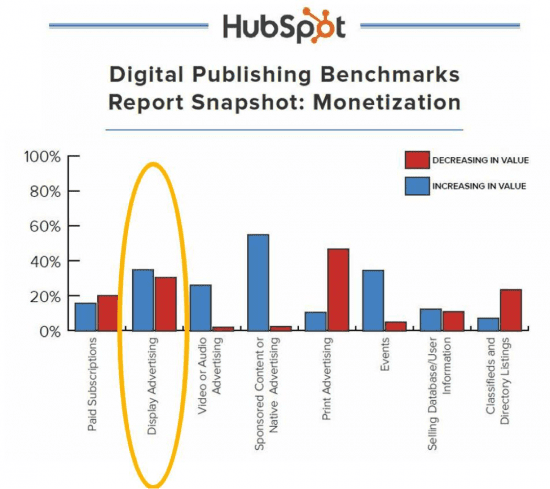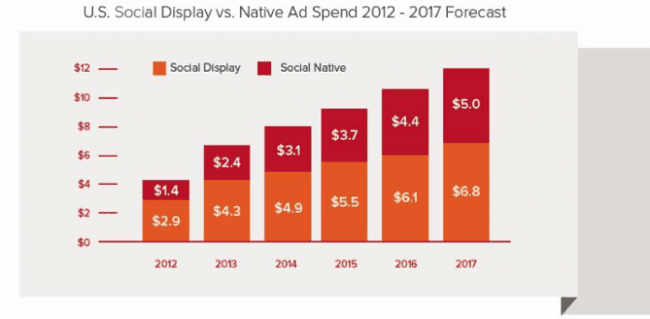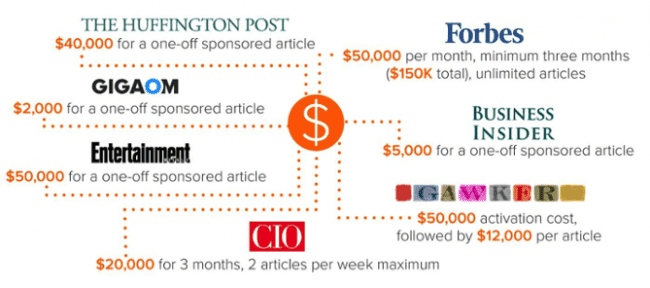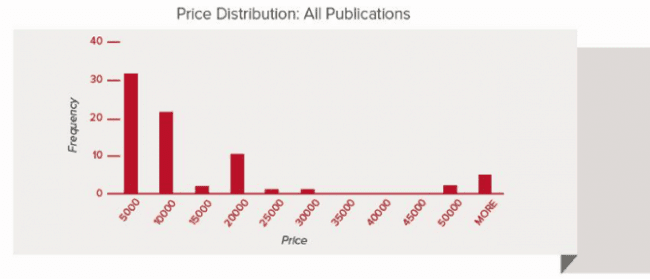It’s no secret that many consumers are fed up with banner advertising. That’s one reason why ad blocking software adoption is gaining in popularity worldwide. It’s not just consumers, either. Many marketers complain about their effectiveness, too. Publishers are stuck in between both party’s complaints and many of them are reacting to this pressure.
It may sound cliché, but according to Solve Media, you’re more likely to:
I wouldn’t suggest sounding the death knell for display advertising just quite yet, however. While many of the signs and trends point to its waning, it will likely be around for a very long time.
Even with these predictions of doom and gloom from some marketers the investment in display advertising continues to grow. Ad blocking software isn’t slowing that down. One of the reasons why is simple – targeting, retargeting, machine learning and programmatic approaches to serving up ad units is creating a much more efficient system. This helps increase brands’ return on investment.
Some marketers not only loath display advertising as a consumer, but swear up and down it doesn’t work as well as other channels. That’s true in some cases, but ultimately it boils down to what the banner is promoting and how well it’s targeted. These complaints from marketers have largely grown with the adoption and deployment of content marketing.
Most content marketers produce and promote mainly top funnel content – articles, ebooks, guides, how-to’s, etc. However, historically, display advertising success has come from the promotion of mid to bottom funnel content – case studies, free trials, coupons, catalogs, products, etc.
This is problematic, because getting someone to visit top funnel content still requires additional investment to move them to the middle, and ultimately, the bottom of the funnel. In the B2B world this process can take months and sometimes over a year or more.
So those marketers attempting to use display advertising to distribute top funnel content are correct. It doesn’t always work for them because they’re paying the same cost at the top of the funnel that other brands are paying at the bottom of the funnel.
Generally, the B2C buyer’s journey is much quicker – days and even minutes in some cases. B2C brands with funnels that look like this don’t necessarily have much additional investment to drive revenue using display advertising like B2B brands. That’s precisely why the vast majority of investment in this form of advertising comes from B2C industries.
According to HubSpot’s "Digital Publishing Benchmarks Report", the majority of publishers expect the value of display advertising (from a revenue perspective) to increase in the next six months. There are two other important trends to note, too. Sponsored content and native advertising are widely predicted to increase in value alongside display in the next six months.
 This is not a surprise. With predictions of continued investment in display advertising, largely driven by B2C brands, publishers’ thoughts around future revenue mirror the reality of the marketplace. Display is what most publishers know and can scale, thus cementing it as a revenue driver in their minds for the foreseeable future.
This is not a surprise. With predictions of continued investment in display advertising, largely driven by B2C brands, publishers’ thoughts around future revenue mirror the reality of the marketplace. Display is what most publishers know and can scale, thus cementing it as a revenue driver in their minds for the foreseeable future.
As mentioned above, display advertising is primarily built to deliver ROI on mid-to-bottom funnel content distribution. This makes it a tough channel for top funnel content marketers to scale distribution because of the additional investment required to move that traffic from the top to the bottom of the funnel over time.
This leaves a giant distribution gap for content marketers. Display advertising is too expensive for top funnel content, generally. What’s filling this gap? Sponsored content and native advertising does for B2B publishers what display advertising can do for B2C brands – drive ROI-producing traffic at scale. Cost per clicks or cost per thousand impressions are generally much less for native advertising.
David Ogilvy, the “father of advertising,” once said, “It has been found that the less an advertisement looks like an advertisement and the more it looks like an editorial, the more readers stop, look and read.”
This is precisely what native advertising and sponsored content does for top funnel content marketers. It’s ideal, too, because it’s exactly what these marketers want from their content – to be read.
Bob Gilbreath, Co-Founder and President of Ahalogy, claims that publishers can gain 100-times more revenue per visitor compared to display advertising. He also points out that brands and publishers can tell stories together that are 100-times deeper than what a banner ad can do. Hence, native advertising and sponsored content can be a better experience for the consumer.
According to Relevance’s "Media Buyer’s Guide to Sponsored Content", this filling of the gap is reflected by adoption rates from brands and publishers alike.
 Juxtaposing predicted social display advertising versus social native advertising spend gives us a good view of the growth and evolution of both channels, comparatively, over time. Again, this just reflects the reality of the marketplace – display and native advertising is on the up and up.
Juxtaposing predicted social display advertising versus social native advertising spend gives us a good view of the growth and evolution of both channels, comparatively, over time. Again, this just reflects the reality of the marketplace – display and native advertising is on the up and up.
 Another reason why publishers are increasingly developing sponsored content programs is simple – it’s relatively cheap to execute and can have great profit margins. Below are just a few examples of what some big name publishers charge for sponsored content.
Another reason why publishers are increasingly developing sponsored content programs is simple – it’s relatively cheap to execute and can have great profit margins. Below are just a few examples of what some big name publishers charge for sponsored content.
 Here’s the actual price distribution for sponsored content in premium publications outlined in our study.
Here’s the actual price distribution for sponsored content in premium publications outlined in our study.
 The sponsored content insights above were developed from the first ever pricing study done on this channel. We contacted over 1,000 publishers and collected over 550 data points to create a sponsored content pricing formula that is available for download here.
The sponsored content insights above were developed from the first ever pricing study done on this channel. We contacted over 1,000 publishers and collected over 550 data points to create a sponsored content pricing formula that is available for download here.
The answer to that question is simple – No. Despite some consumers’ complaints and the loathing of some marketers, display advertising is here to stay for a long time. However, display advertising must be paired with the right content.
For some brands native advertising and sponsored content are alternative viable channels to consider for driving profitable content visibility over time. Publishers, brands and even consumers tell us directly or indirectly to keep investing in these forms of advertising and that’s not going to change anytime soon.